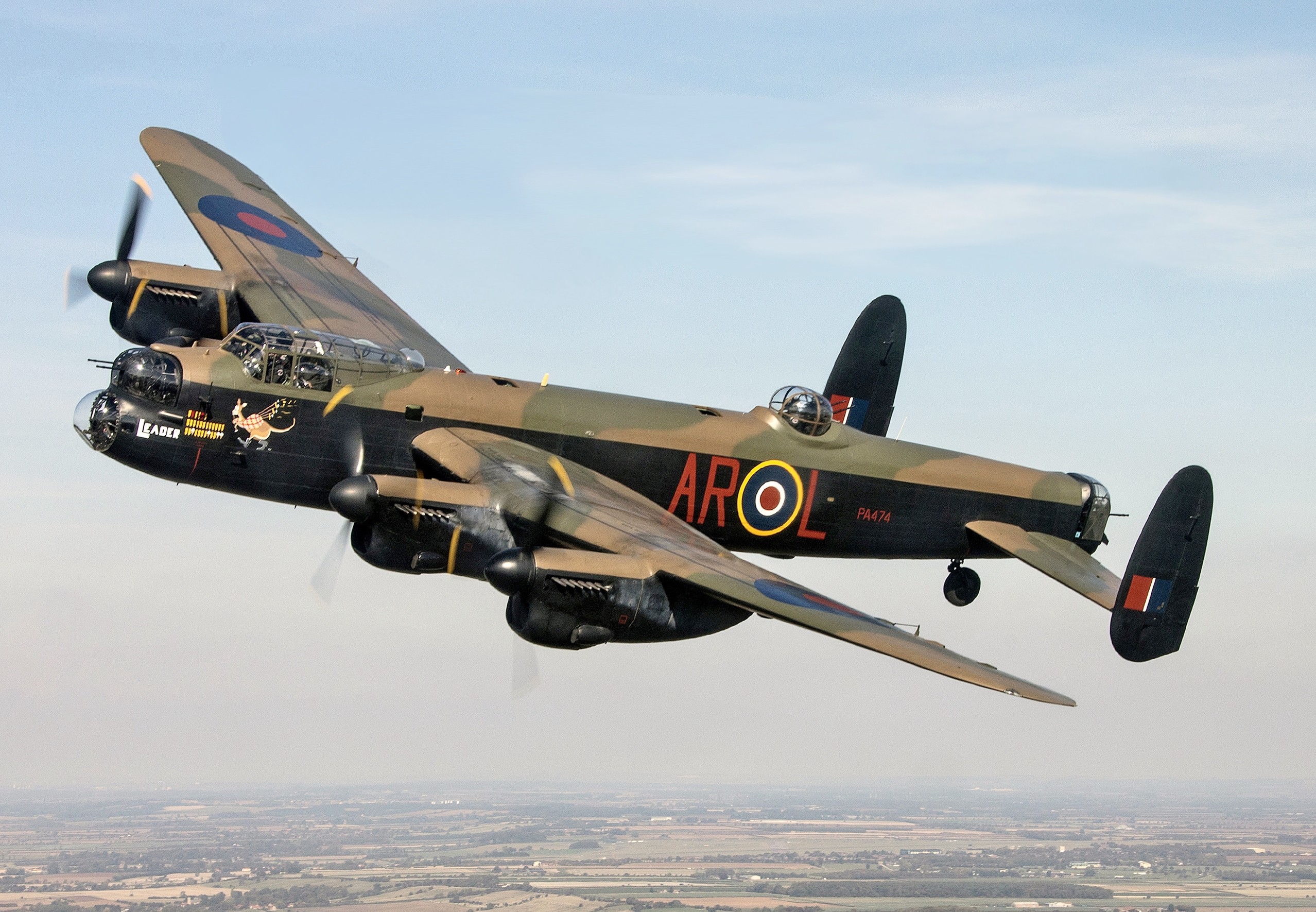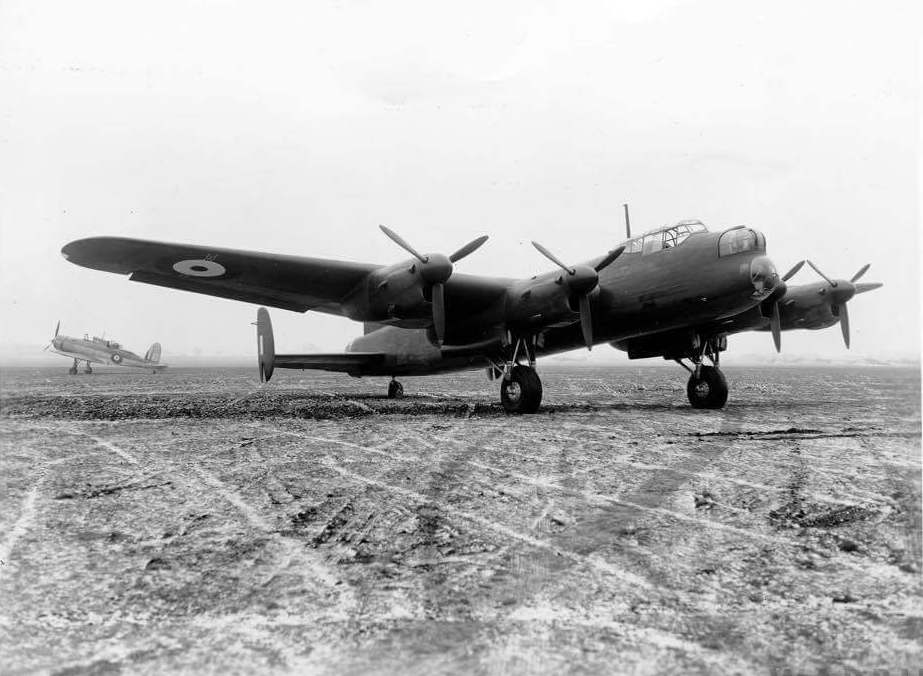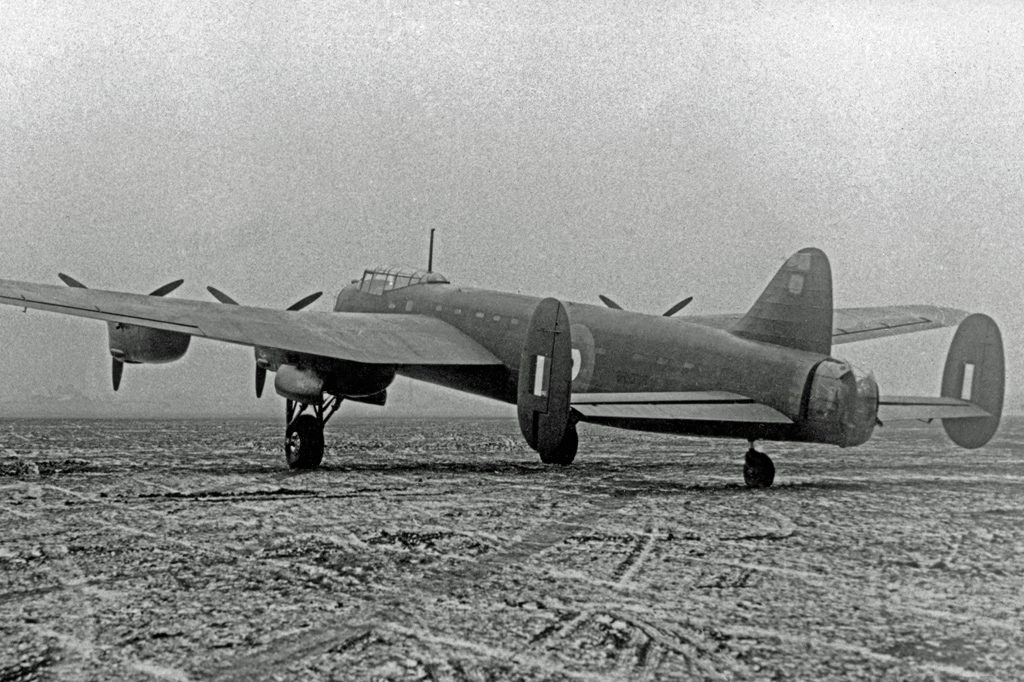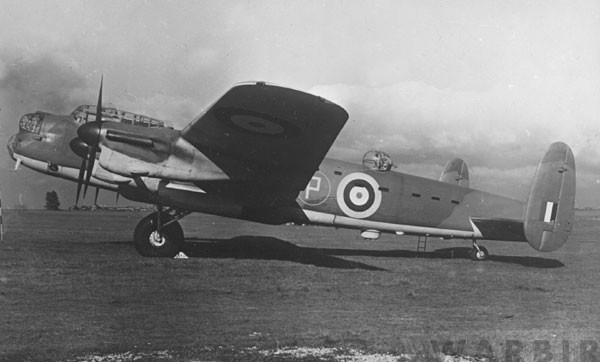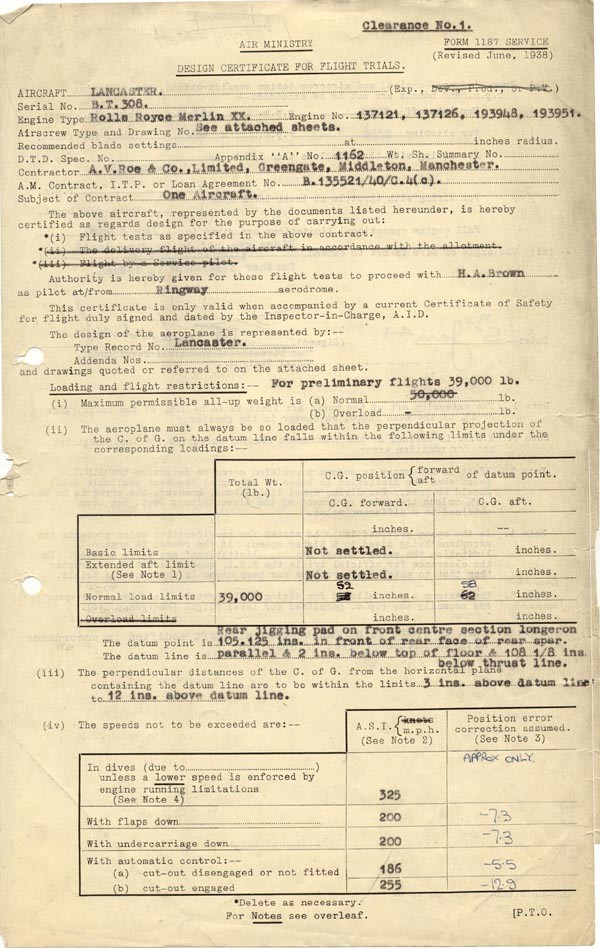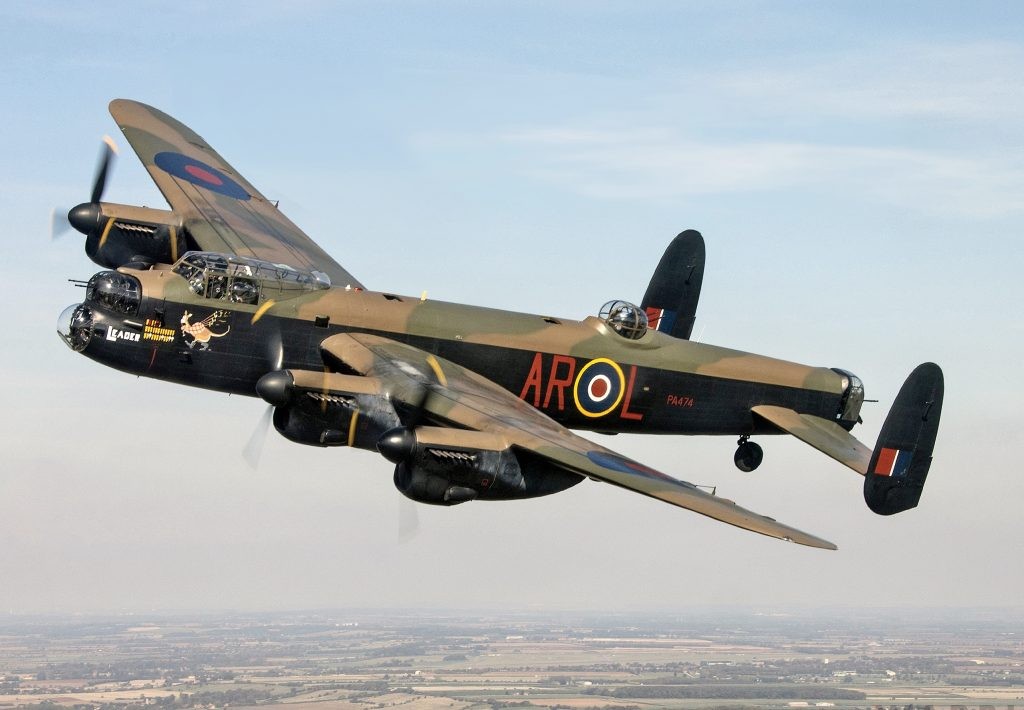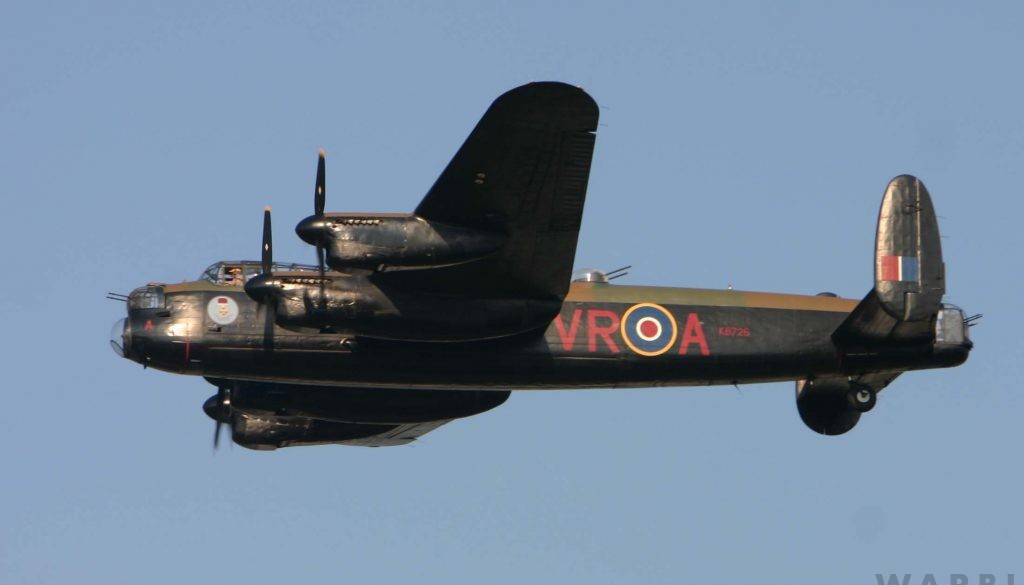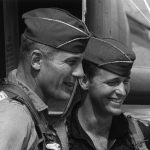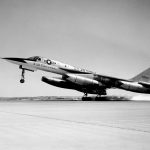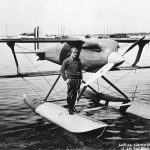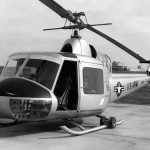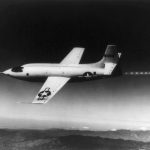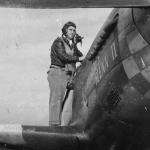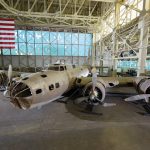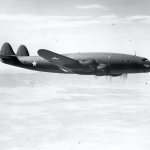by Bryan R. Swopes of This Day in Aviation
On January 9, 1941 test pilot Captain Harry Albert (“Sam”) Brown, O.B.E., (1896–1953) made the first flight of the Avro Lancaster prototype, BT308, at RAF Ringway, Cheshire, England, south of Manchester.
Throughout World War II, 7,377 of these long-range heavy bombers were produced for the Royal Air Force. The majority were powered by Rolls-Royce or Packard Merlin V-12 engines—the same engines that powered the Supermarine Spitfire and North American P-51 Mustang fighters.
The bomber was designed by Roy Chadwick, F.R.S.A., F.R.Ae.S., the Chief Designer and Engineer of A. V. Roe & Company Limited, based on the earlier twin-engine Avro Manchester Mk.I. Because of this, it was originally designated as the Manchester Mk.III, before being re-named Lancaster. Chadwick was appointed Commander of the Most Excellent Order of the British Empire, 2 June 1943, for his work. The first prototype, BT308, was unarmed and had three small vertical fins.
With the second prototype, DG595, the small center vertical fin was deleted and two larger fins were used at the outboard ends of a longer horizontal tailplane. DG595 was also equipped with power gun turrets at the nose, dorsal and ventral positions, and at the tail.
The first production model, Lancaster Mk.I, was operated by a crew of seven: pilot, flight engineer, navigator/bombardier, radio operator, and three gunners. It was a large, all-metal, mid-wing monoplane with the retractable landing gear. It was 68 feet, 11 inches (21.001 meters) long with a wingspan of 102 feet, 0 inches (31.090) meters, and an overall height of 19 feet, 6 inches (5.944 meters). The Mk.I had an empty weight of 36,900 pounds (16,738 kilograms) and its maximum takeoff weight was 68,000 pounds (30,909 kilograms).
BT308 and early production Lancasters were equipped with four liquid-cooled, supercharged, 1,648.96-cubic-inch-displacement (27.01 liters), Roll-Royce Merlin XX single overhead camshaft (SOHC) 60° V-12 engines, which were rated at 1,480 horsepower at 3,000 r.p.m. to 6,000 feet (1,829 meters). The Merlins drove three-bladed de Havilland Hydromatic quick-feathering, constant-speed airscrews (propellers), which had a diameter of 13 feet, 0 inches (3.962 meters), through a 0.420:1 gear reduction.
DG595 was used for performance testing at the Aeroplane and Armament Experimental Establishment (A&AEE) at Boscombe Down. The Mark I had a maximum economic cruise speed of 267 miles per hour (430 kilometers per hour) at 20,800 feet (6,340 meters), and a maximum speed of 286 miles per hour (460 kilometers per hour) at 20,000 feet (6,096 meters) at a gross weight of 45,300 pounds (20,548 kilograms).¹ Its service ceiling was 20,000 feet (6,096 meters) at 64,500 pounds (29,257 kilograms). It had a range of 2,530 miles (4,072 kilometers) with a 7,000 pound (3,175 kilograms) bomb load.
The Lancaster was designed to carry a 14,000 pound (6,350 kilograms) bomb load, but modified bombers carried the 22,000 pounds (9,979 kilograms) Grand Slam bomb. For defense, the standard Lancaster had eight Browning .303-caliber Mark II machine guns in three power-operated turrets, with a total of 14,000 rounds of ammunition.
According to the Royal Air Force, “Almost half all Lancasters delivered during the war (3,345 of 7,373) were lost on operations with the loss of over 21,000 crew members.”
Out of 7,373, Lancaster bombers built only 17 are still existing and only two airworthy Avro Lancasters are in existence. Lancaster PA474, operated by the Battle of Britain Memorial Flight was built at the Vickers Armstrong Broughton factory at Hawarden Airfield, Chester on 31 May 1945, just after VE-day. The war in the Far East ended before she was deployed and she did not take part in any hostilities.
The Canadian Warplane Heritage Museum based in Mount Hope, ON, Canada operates the second airworthy Lancaster. The Museum’s Lancaster Mk. X was built at Victory Aircraft, Malton in July 1945 and was later converted to an RCAF 10MR configuration. In 1952, it suffered a serious accident and received a replacement wing center section from a Lancaster that had flown in combat over Germany. It served as a maritime patrol aircraft, with No. 405 Squadron, Greenwood, NS, and No. 107 Rescue Unit, Torbay, Newfoundland for many years and was retired from the RCAF in late 1963. With help from the Sulley Foundation in 1977, it was acquired from the Royal Canadian Legion in Goderich, Ontario, where it had been on outside display. Eleven years passed before it was completely restored and flew again on September 24, 1988. The Lancaster is dedicated to the memory of P/O Andrew Mynarski and is referred to as the “Mynarski Memorial Lancaster”. It is painted in the colors of his aircraft KB726 – VR-A, which flew with RCAF No. 419 “Moose” Squadron. Andrew Mynarski won the Victoria Cross, the Commonwealth’s highest award for gallantry, on June 13, 1944, when his Lancaster was shot down in flames, by a German night fighter. As the bomber fell, he attempted to free the tail gunner trapped in the rear turret of the blazing and out-of-control aircraft. The tail gunner miraculously survived the crash and lived to tell the story, but sadly Andrew Mynarski died from his severe burns.
For more aviation anniversaries please visit www.thisdayinaviation.com







